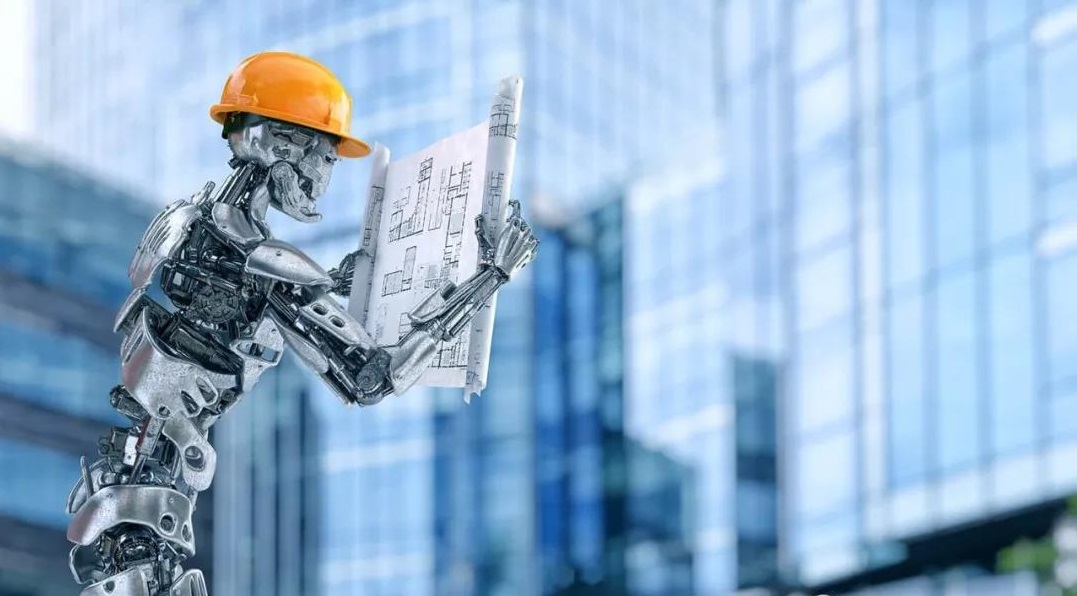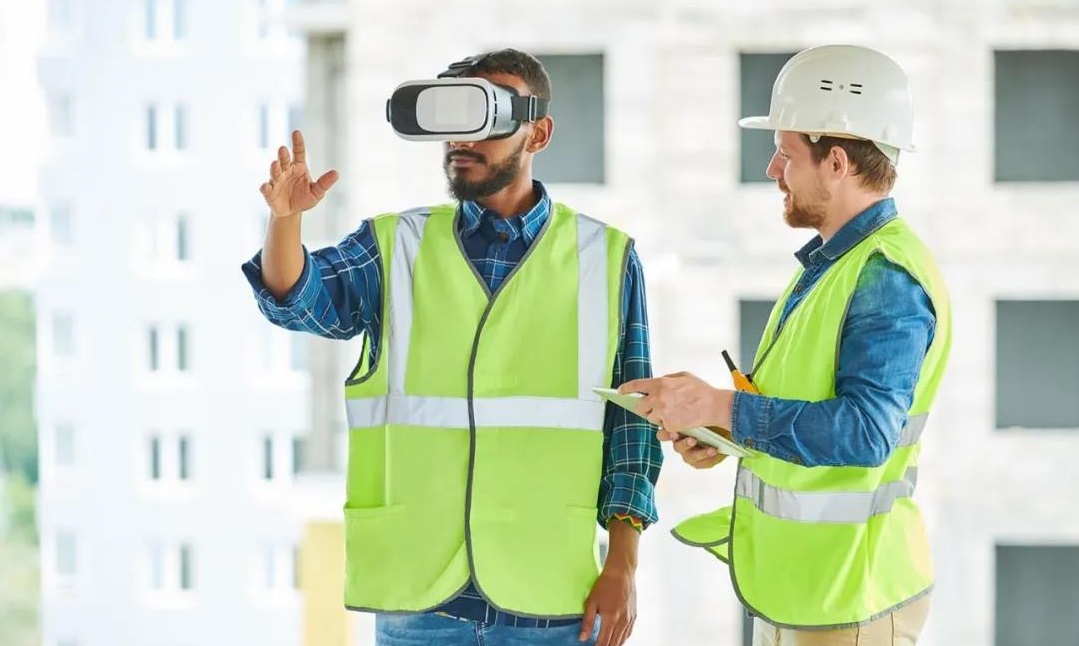7 major construction technology trends that will affect the industry in the coming years
In this article, we take a look at the top 7 construction technology trends that will affect the industry in coming years.
- Big Data
- Artificial intelligence and machine learning
- Internet of Things
- Robots and drones
- Building Information Modeling
- Virtual reality/augmented reality
- 3D printing
BIG DATA
The use of big data in buildings:
It can analyze historical big data, find out the mode and probability of construction risks, guide new projects to success, and stay away from traps.
Big data from weather, traffic, communities, and commercial activities can be analyzed to determine the best stage of construction activities.
It can process the sensor input of the machines used in the field to show the activity and idle time, so as to draw the best combination of buying and renting such equipment, and how to use the fuel most effectively to reduce the cost and ecological impact.
The geographic location of the equipment can also improve logistics, provide spare parts when needed, and avoid downtime.
The energy efficiency of shopping malls, office buildings, and other buildings can be tracked to ensure that they meet design goals. The traffic pressure information and the degree of bridge bending can be recorded to detect any cross-border incidents.
These data can also be fed back into the building information modeling (BIM) system to schedule maintenance activities as needed.
Artificial intelligence and machine learning
Imagine a world where you can use computer systems to program robots and machines, or automatically calculate and design houses and buildings. This technology is already available and in use today, and it continues to help advance construction technology so that the industry can benefit from the increase in cost and speed.
Here are some examples of how artificial intelligence and artificial intelligence can benefit the construction industry:
Predictive design, consider weather, location and other factors to create digital building twins to extend the life of the building.
Better building design-Machine learning can be used to explore different variants of solutions and create design alternatives, while considering mechanical, electrical and plumbing systems, and ensure that the route of the MEP system does not conflict with the building architecture.
Using artificial intelligence-driven automation to take over highly repetitive tasks can significantly increase productivity and safety, while addressing labor shortages in the industry.
Better financial planning and project management-Using historical data, artificial intelligence can predict any cost overruns, realistic timetables, and help employees access information and training materials faster to reduce onboarding time.
Increase productivity-Artificial intelligence can be used to power machinery to perform repetitive tasks, such as pouring concrete, laying bricks, or welding, thereby freeing up manpower for the building itself.
Improved safety-construction workers are killed at work five times more frequently than other workers. By using artificial intelligence, it is possible to monitor potential safety hazards at the scene, and use photos and recognition technology to judge workers.
IOT
This Internet of Things is already an indispensable part of construction technology, and it is changing the way it works on a large scale.
The Internet of Things consists of smart devices and sensors, all of which share data with each other and can be controlled from a central platform. This means that a new, smarter, more efficient, and safer way of working is now very possible.
What does this mean for architecture?
Smart machines can be used to perform repetitive tasks, or they can be smart enough to maintain themselves. For example, a cement mixer with a small amount of cement can order more for itself by using sensors, thereby increasing efficiency and productivity
You can track passenger flow on site and use apps to guide and register employees in and out, thereby reducing heavy paperwork and saving a lot of time
Improve safety-through geolocation, dangerous areas within a construction site can be identified, and smart technology can be used to alert any workers when they enter the area.
By using smart technology, it can greatly reduce the carbon footprint of a development. By installing sensors in the vehicle, turning off the engine when idling, or by measuring losses, and using these data for better planning to inform the development of the layout, thereby reducing cross-site travel.
Robots and drones
The construction industry is one of the industries with the lowest degree of automation, with labor-intensive labor as the main source of productivity. Surprisingly, robots have not yet played an important role.
A major obstacle in this regard is the construction site itself, because robots require a controlled environment and repetitive and immutable tasks.
However, with the rise of construction technology, we are now seeing construction sites becoming more and more intelligent, as are the ways in which robots are programmed and used. Here are a few examples that illustrate that robotics and drone technology are now being used on construction sites:
Drones can be used for on-site security; they can monitor the site and use cameras to identify any dangerous areas, allowing the construction manager to quickly view the site without being present
Drones can be used to deliver materials to the site, reducing the number of vehicles required on site
Bricklaying and masonry are tasks that can use robots to increase the speed and quality of work
Demolition robots are being used to dismantle structural components at the end of the project. Although they are slower, they are cheaper and safer remotely controlled or self-driving vehicles.
Building Information Modeling Technology
BIM technology is an intelligent 3D modeling tool that supports engineering, construction and construction professionals to effectively plan, design, modify and manage buildings and their infrastructure. It starts with the creation of a model and supports document management, coordination, and simulation throughout the project’s entire life cycle (planning, design, construction, operation, and maintenance).
BIM technology can achieve better collaboration, because each expert can add his field of expertise to the same model (architecture, environmental protection, civil engineering, factory, building and structure), so as to be able to review project progress and work results in real time.
It is expected that the further development of BIM functions and subsequent technologies will trigger changes in the design, development, deployment and management of construction projects.
Compared with 2D drawings, it is the perfect support for conflict detection and problem resolution in the design process, improving planning and increasing efficiency throughout the life cycle of a construction project. Among all the benefits, it also helps to optimize work and company processes.
Virtual reality technology/augmented reality
Virtual reality and augmented reality technologies are considered game changers in the construction industry. To be sure, they no longer belong to the gaming industry.
Virtual reality (VR) means a completely immersive experience that shuts out the physical world, while augmented reality (AR) adds digital elements to the real-time view.
The potential of combining virtual reality/augmented reality technology with building information modeling technology is endless. The first step is to create a building model using BIM technology, then take a sightseeing tour and walk around-thanks to the augmented reality/virtual reality function.
The following are some of the advantages and applications of augmented reality/virtual reality technology in today’s buildings:
Take a virtual tour/walk through the architectural model, so you can almost personally experience what the completed physical project will look like and how the layout of the design will flow
Better collaboration – teams can work together on a project regardless of their physical location
Real-time design feedback-the visualization of the 3D project and its surrounding environment provided by augmented reality/virtual reality technology supports rapid and accurate simulation of architectural or structural changes [BR], automatically measures and realizes design improvements.
Risk assessment (as a demanding and sensitive activity) is enhanced through hazard simulation and conflict detection, and has become a routine task included in these innovative technologies.
The potential of augmented reality/virtual reality technology in terms of safety improvement and training is invaluable, and the support for managers, supervisors, inspectors or tenants is also invaluable, and they don’t even need to be present to perform on-site drills in person.
3D printing
3D printing is quickly becoming an indispensable construction technology in the construction industry, especially considering its impact on changes in material procurement. This technology pushes the boundary beyond the designer’s desk by creating a three-dimensional object from a computer-aided design model and constructing the object layer by layer.
The following are some of the benefits that the construction industry currently sees from 3D printing technology:
3D printing provides the ability to prefabricate off-site or directly on-site. Compared with traditional construction methods, materials that are important for prefabrication can now be printed and immediately ready for use.
In addition, 3D printing technology reduces material waste and saves time by making samples or even complete objects in 3D and monitoring all details for proper design.
The characteristics of 3D printing technology have affected significant labor force, energy saving and material cost efficiency, as well as the sustainable development support of the construction industry.
For construction companies, this is a great advantage. Materials can be delivered quickly, reducing additional useless steps in the technical process.

